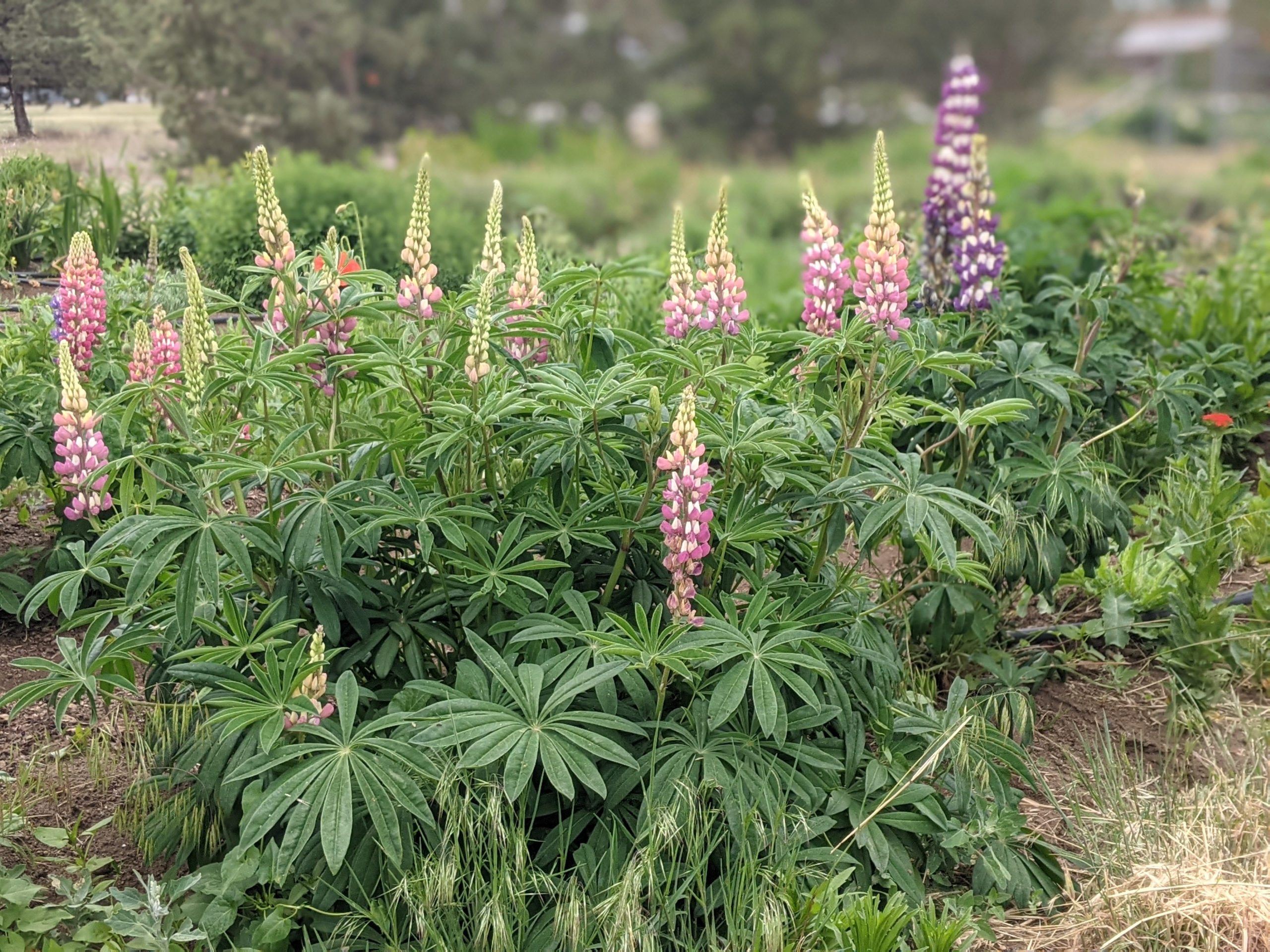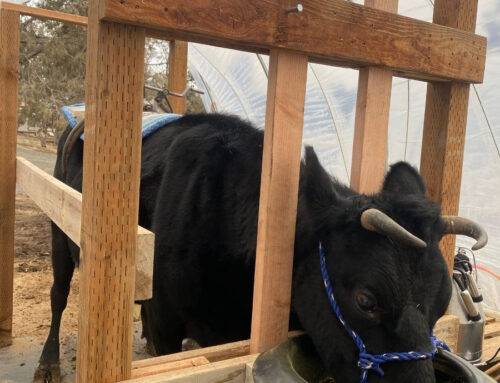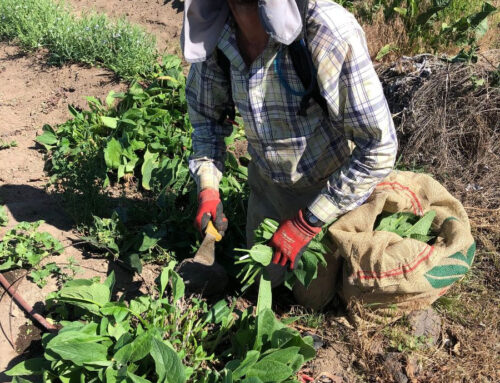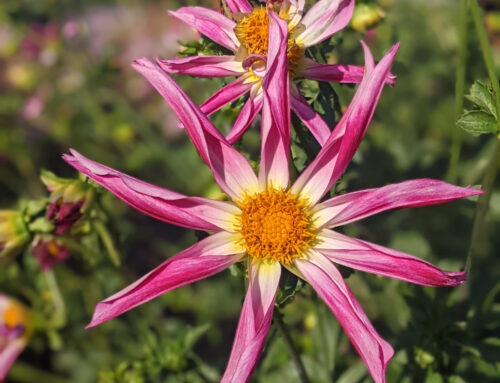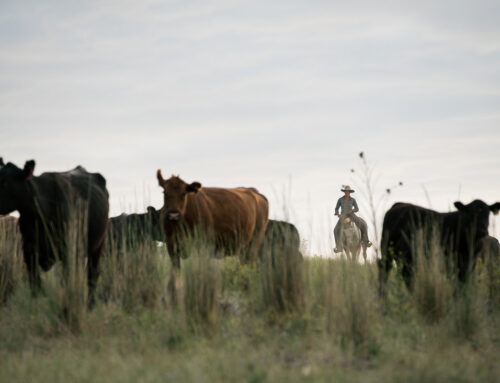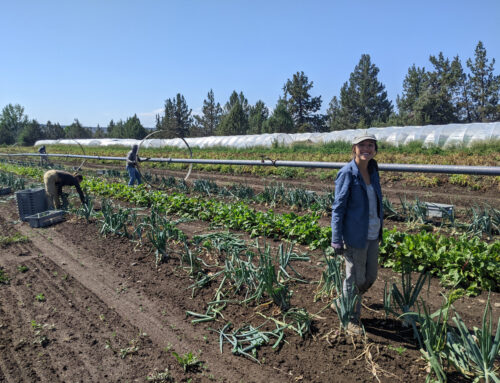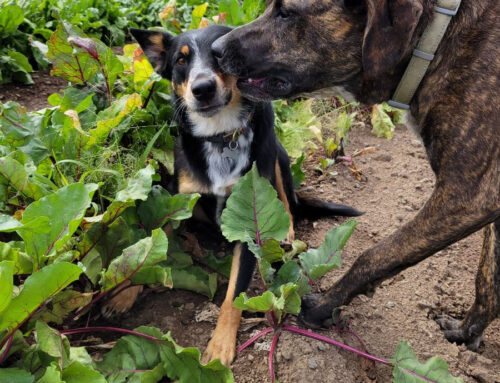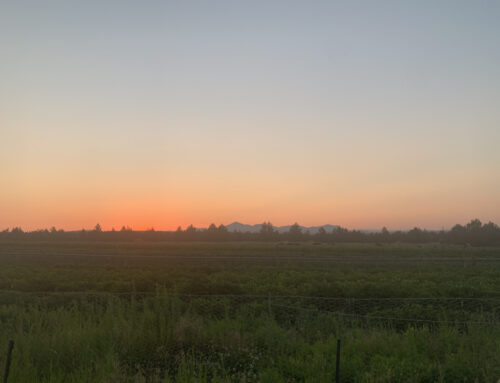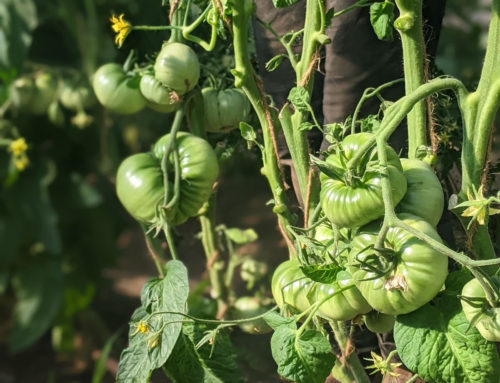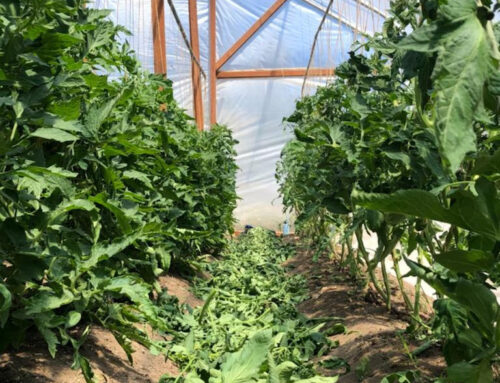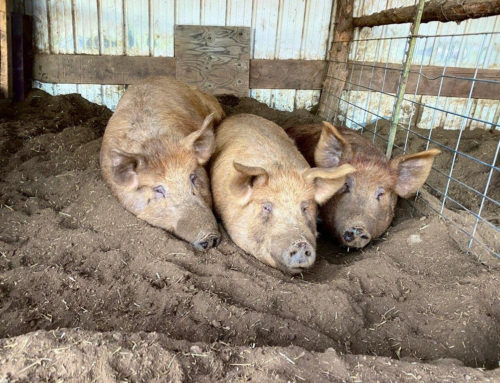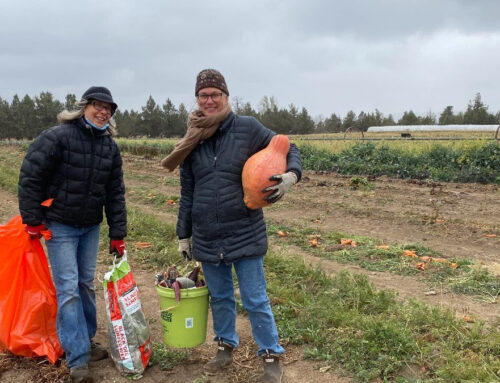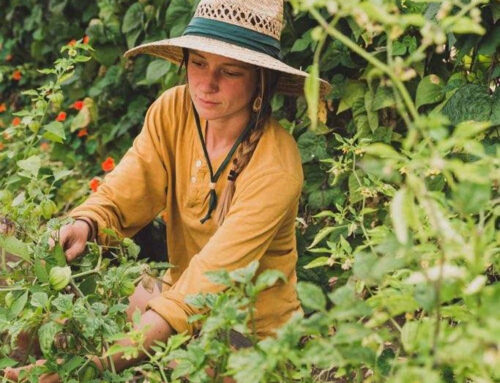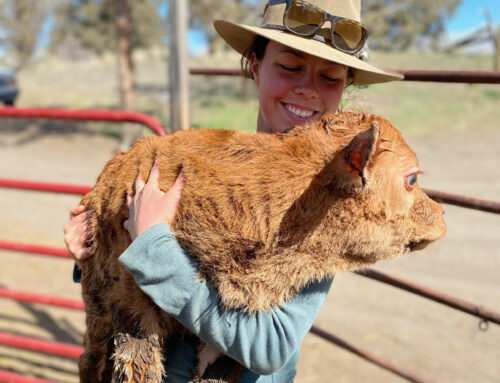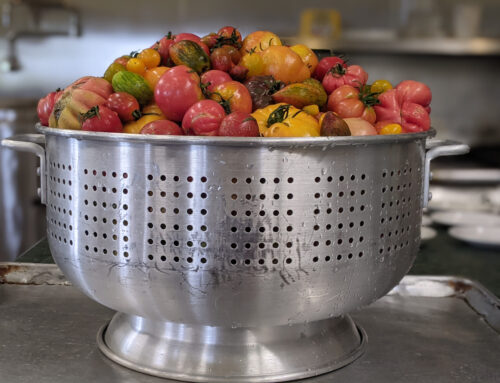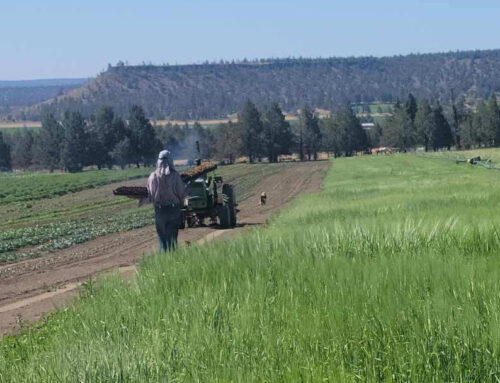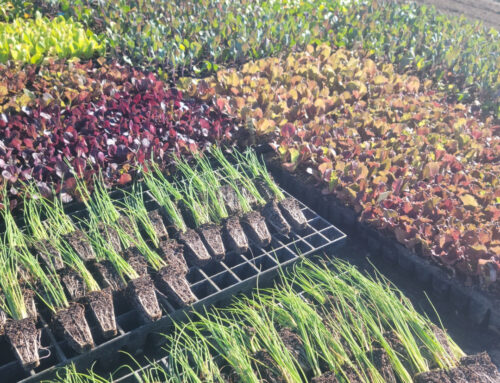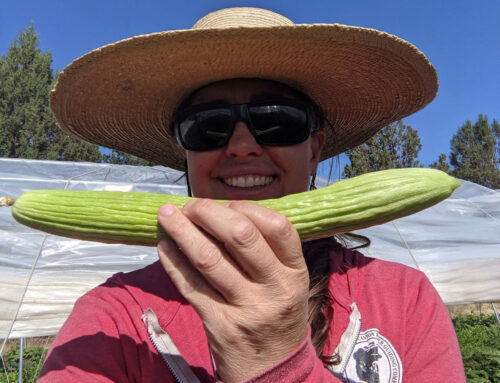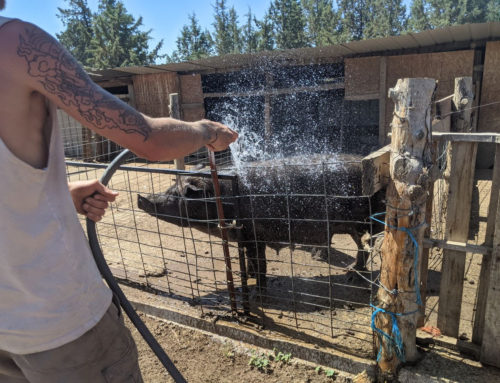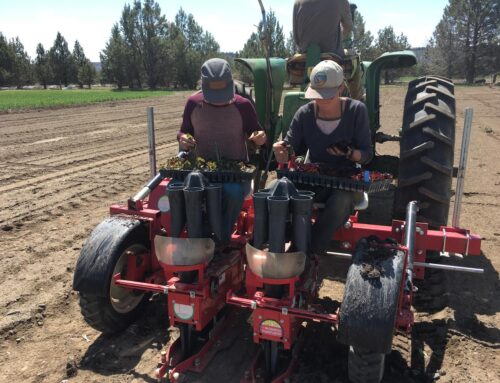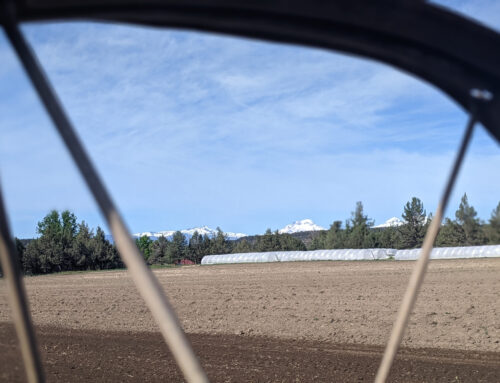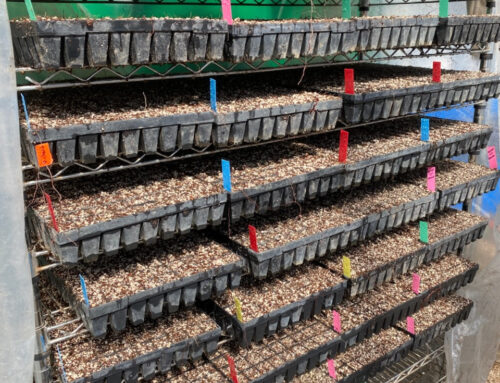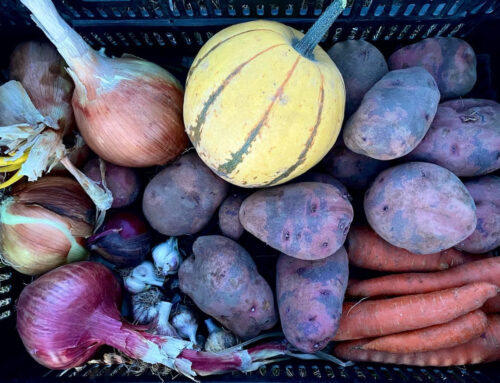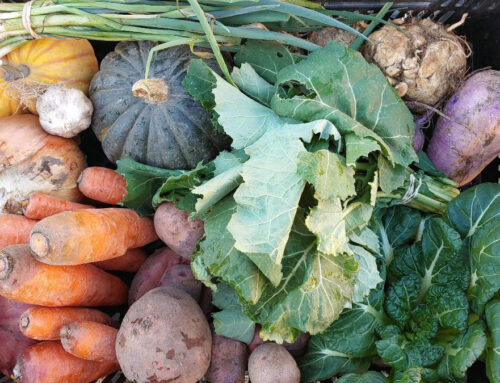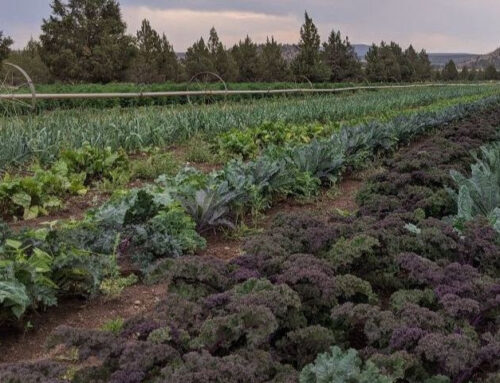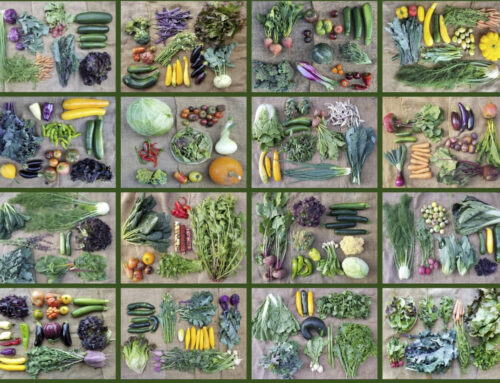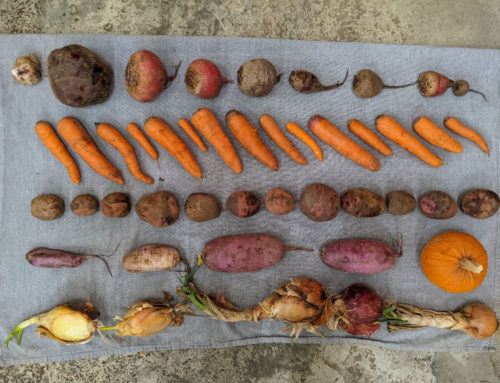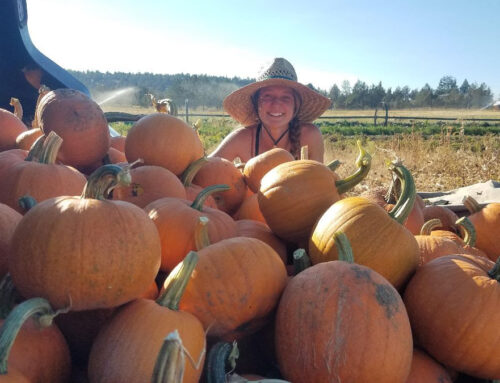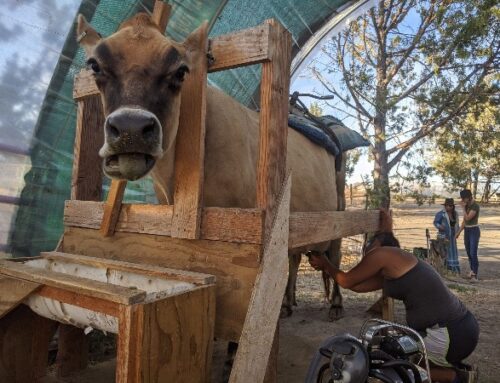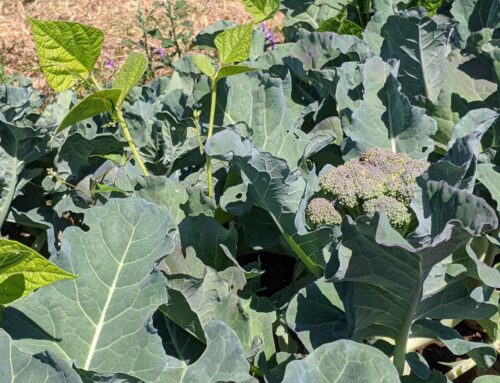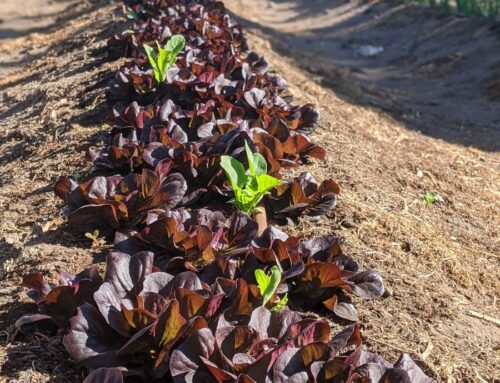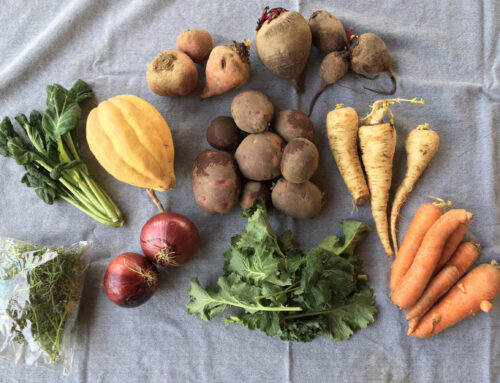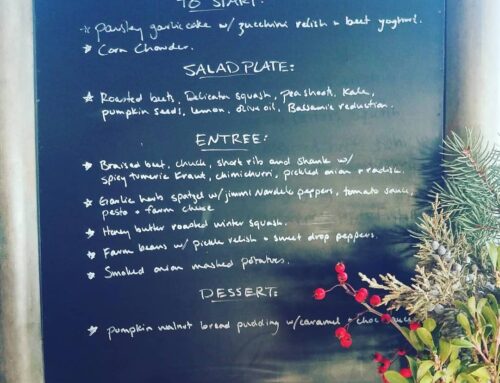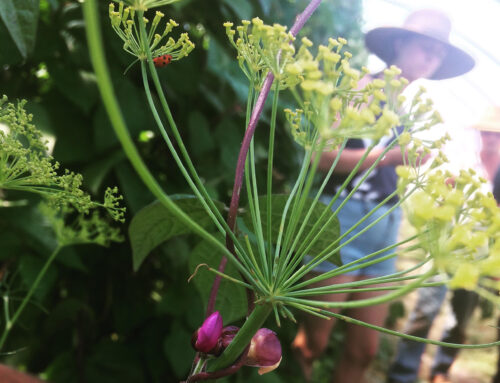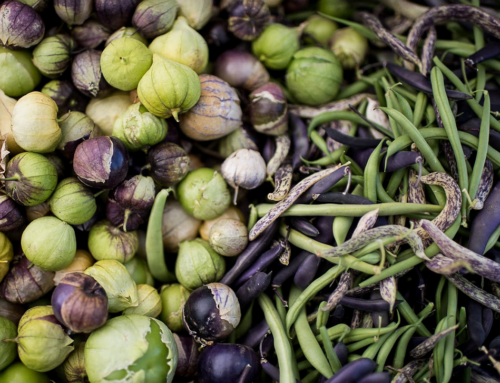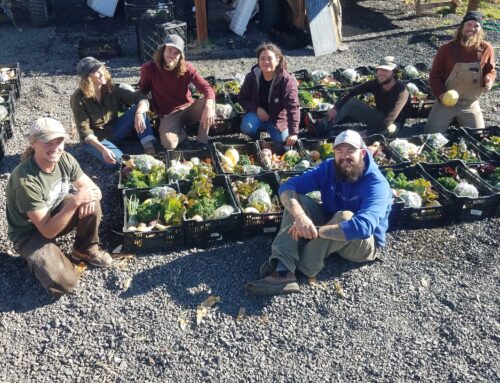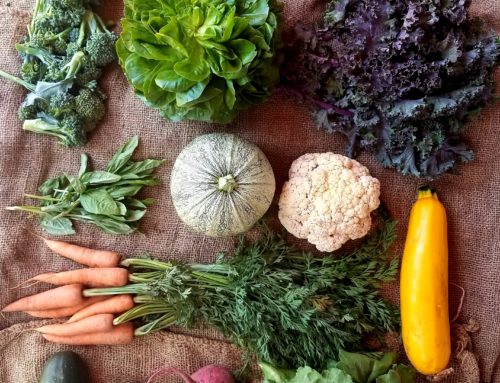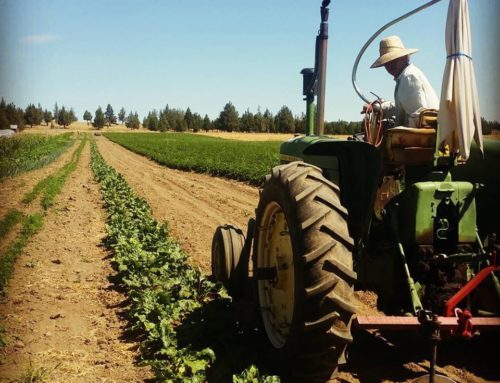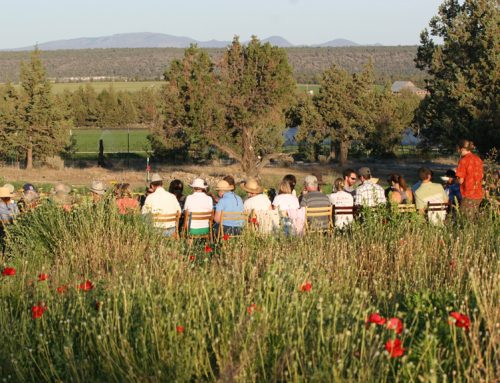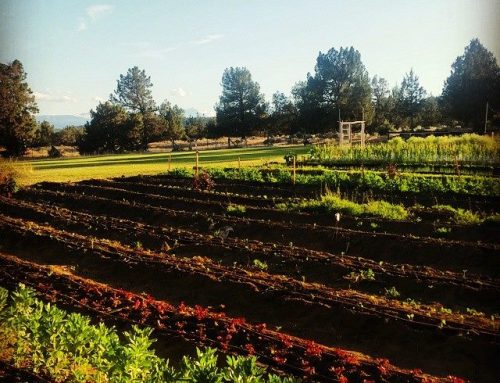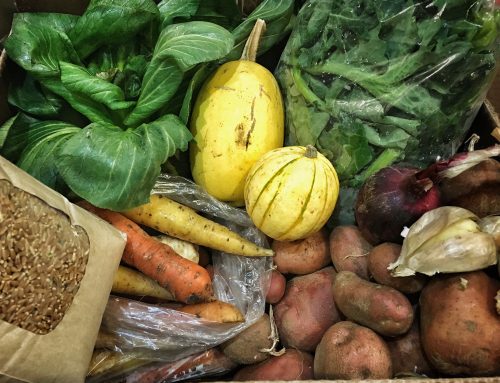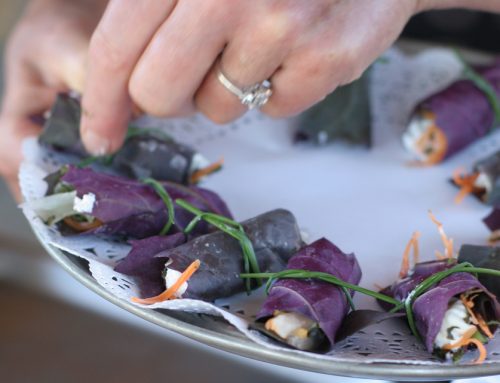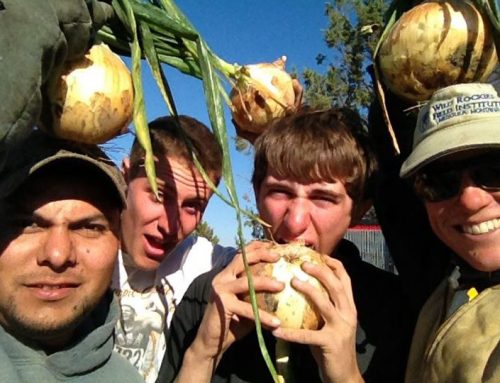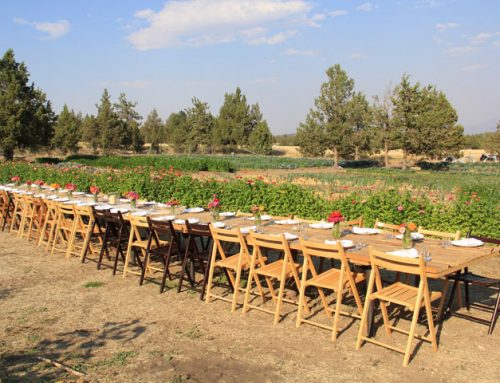Weeding: it’s what we do to stay ahead
This past week we did a lot of weed maintenance. As organic farmers, the only real way to keep weeds down to a “manageable” level is to stay on top of the weeding! Often this means weeding when you can’t even see weeds.
At the very early stages of a weed’s life, right after germination, they are hair sized and living in the top layers of the soil. The best way to prevent a future forest of weeds is to disturb the top 1/2″ or so of soil with something like a hula hoe. This flips the weed tendrils to the very top of the soil column, removes them from their water source, and bakes them in the sun. With this tactic, the weeds get dehydrated and die before they turn into the plague they want to become.
In the 2-acre garden and hoops, hula hoes work great. But in the 25-acre we fully embrace the mechanization of our tractors! It saves us time and human energy and gives us a huge leg up keeping our weeds under control. For our potatoes (all those pictures below), we use a Tiny Treffler and a hiller. The potatoes are growing fast so this was the last week we could use the Tiny Treffler on them, but the passes we have made over previous weeks and this pass today have kept the weeds down to a super manageable level. The Tiny Treffler combs through the top of the bed and disturbs the hair sized weeds in the top of the soil column. The Hiller serves 2 purposes: adding more dirt around the potato plants so it can grow more potatoes and also buries the baby weeds so they are starved of sunshine and can’t grow. Both of these actions allow the potatoes to grow bigger so they can out compete and shade out weeds and grow even more potatoes for the winter. Yay!




Top Left: the Tiny Treffler weeding the potatoes. Top Right: the Hiller in front of the Tiny Treffler pushing dirt up around the potatoes and burying the weeds. Bottom Left: right side of the frame is a hilled and Tiny Treffler weeded potato row, left side hasn’t been weeded or hilled. Bottom Right: potato plants after they have been hilled and weeded. Notice the small weeds on top of the soil and the potatoes all tucked into the dirt.
Another way to control weeds is to kill them all off before you start planting. Last year we took the southeast-ish corner of the 2-acre out of rotation and put solarization tarps on it in an effort to control an errant quack grass infestation. Last week we removed the tarps and started watering the section again. The weeds in the top layers of the soil column are germinating as we speak. This week, the farmers will go out and hula hoe everything. This will kill those tiny hair like weeds and then we can plant!


Left: We removed the solarization tarps and have started watering the southeast-ish corner of the 2-acre in preparation for planting more starts in the coming days. Right: The north-middle quadrant of the 2-acre, what the newly uncovered section will look like in a few weeks!
CSA Pickup Update:
You all know how much we HATE plastic at Rainshadow Organics. We have tried for a few seasons to find an alternative to plastic for transporting and selling our salad mix and other bulk greens. Unfortunately, nothing has really worked. The compostable clam shells would get wet during transport and start composting right there and we noticed that the quality of bulk greens would decrease too quickly when we used the large bags of salad mix and dished out of them into your personal bags.
We spent the winter reaching out to other farmers and trying to find an alternative to plastic bags. What we learned is that THERE ISN’T ONE! How irritating is that! No viable alternative for plastic free bulk greens containers that keep greens as fresh as we want them to be. On the one hand it is nice to know we aren’t alone. On the other hand, it is such a disappointment that no one else has found a solution yet.
What that means for the CSA is that we are switching up how we give you bulk greens this summer. When bulk spinach, arugula, or salad mix are available, they will be bagged up in plastic bags for you to grab as part of your share. We know this is counter to a lot of our methods here at Rainshadow, but until we can find a viable alternative, we know this works and it delivers you the best quality greens possible.
Harvest List
If you signed up for a:
SMALL share: you will need to take 1 bunch of herbs, 1 Kohlrabi, and 1 bunch of Hakuri Salad Turnips and will get to select 3 other items
LARGE share: you will need to take 1 bunch of herbs, 1 Kohlrabi, and 1 bunch of Hakuri Salad Turnips and will get to select 6 other items
Herb options will hopefully include: Chives / Dill / Parsley / Thyme / Oregano / Chives w/blossoms
Other Options might include: Kohlrabi / Lettuce Heads / Kale / ChardNapa Cabbage / Asian Greens / Hakurai Turnips / Baby Fennel / Zucchini / Peas / Salad Mix / Arugula / Spinach / Carrots / Green Onions
We have been keeping an eye on the hoops and 2-acre garden and have a pretty good idea of what is out there and ready to be harvested, but this is a Sunday estimation of what we will be harvesting on Tuesday. Also, because we have a market style CSA, this isn’t a guarantee of 1 of all these things for everyone. Instead, this will be the variety of what will hopefully (fingers crossed) have for you to choose from this week.)
Recipes
We spent some time last week focusing on herbs and what you can do with them. Let’s explore Kohlrabi and Hakuri Salad Turnips this week. These are both very refreshing little bites of Central Oregon late spring and early summer!
Both of these recipes include quite a few of the options you can select this week for your share.
Market Ragout of Turnips, Kohlrabi, and Peas
adapted from Local Flavors: Cooking and Eating from America’s Farmers’ Markets, by Deborah Madison
serves 2 to 4
INGREDIENTS
1 tablespoon unsalted butter
6 green onions, chopped
6 or more Hakuri turnips, scrubbed and quartered
1 to 2 kohlrabi, depending on size, peeled and chopped to the same size as the Hakuri turnips
1 thyme sprig
sea salt and freshly ground pepper
1 pound sugar peas, shelled
a few handfuls of baby spinach
dollop crème fraîche
4 large basil leaves, slivered or other available fresh herb, chopped (oregano, thyme, cilantro, parsley, etc.)
INSTRUCTIONS
- Melt the butter in a skillet and add the onions, turnips, kohlrabi, and thyme. Give it all a stir and add water to cover halfway and a teaspoon of salt. Simmer while you shuck the peas.
- As soon as the vegetables are tender, after 12 to 15 minutes, add the peas and spinach and cook until the spinach has wilted down, a few minutes more. Stir in the crème fraîche and add the basil. Taste and adjust seasonings as needed.Y
- You can serve this with a starch (puff pastry, ravioli, even buttered toast) and offer as a vegetarian main dish.
Turnip Salad with Yogurt, Herbs, and Poppy Seeds
Adapted from Joshua McFaddens Six Seasons: A New Way With Vegetables
serves 4
INGREDIENTS
1 bunch of Japanese turnips, with their tops if they’re nice and fresh, trimmed so there’s just a nice 1/4 inch of green stems left1 lemon, halved
1/2 teaspoon dried red chili flakes
kosher salt and freshly ground black pepper
1/2 cup plain whole-milk yogurt (not greek yogurt)
about 1 cup lightly packed mixed herbs: mint leaves, parsley leaves, and chives, finely chopped (or any other fresh herb you have at hand)
4 green onions, trimmed (including 1/2 inch of the green tops) sliced on a sharp angle, soaked in ice water for 20 minutes and then drained well
extra virgin olive oil
1/4 cup poppy seeds
INSTRUCTIONS
- Slice the turnips lengthwise as thin as you can. If you have a mandolin, use it; otherwise a sharp knife and steady hand will do just fine. Soak the sliced turnips in ice water for 15 minutes then drain them very well.
- Rinse, dry and roughly chop the turnip greens. If the greens seem like they’re old or not in the best shape you can quickly saute them in olive oil. Put the turnips in a large bowl and squeeze half of the lemon. Add the chili flakes, 1/2 teaspoon salt, and plenty of black pepper and toss to blend. Add the yogurt and toss again. Add the herbs, scallions, and 1/4 cup olive oil and toss again. Taste and adjust seasonings as needed.
- Scatter about half of the poppy seeds on the bottom of the platter or individual serving plates, top with the turnip salad, and finish the the rest of the poppy seeds. Serve right away before the salad turnips can weep their moisture out
Here are some other options for:
Kohlrabi:
Check out last week’s CSA email for more kohlrabi recipes
Roasted Kohlrabi with Parmesan from the Food Network
5 Tasty Ways to Prepare Kohlrabi from The Kitchn blog
A selection of Kohlrabi recipes from Martha Steward
Hakuri Salad Turnips:
Farro Salad with Turnips and Greens from Food and Wine
Sautéed Japanese Turnips With Turnip Greens Recipe from the Serious Eats blog
Schmaltzy Hakurei Turnips with Rosemary from Food and Wine
Hakurei Turnips with Ginger and Soy from the Nourished Simply blog
Veggie IDs
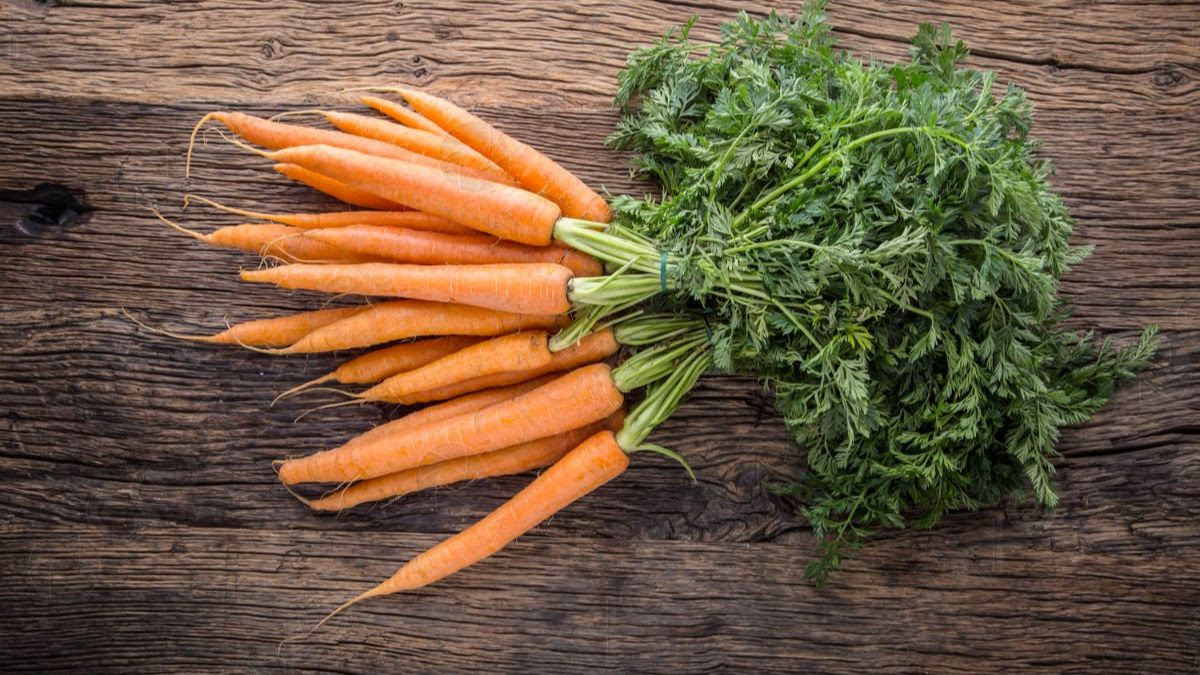
The darker the carrot the more “earthy”, the lighter the color, the sweeter. Carrots are great pickled, roasted, grilled or eaten raw. In the spring, we tend to leave the greens on the carrot bunches. Don’t forget to turn these into carrot top pesto, salsa verde, or carrot top soup.
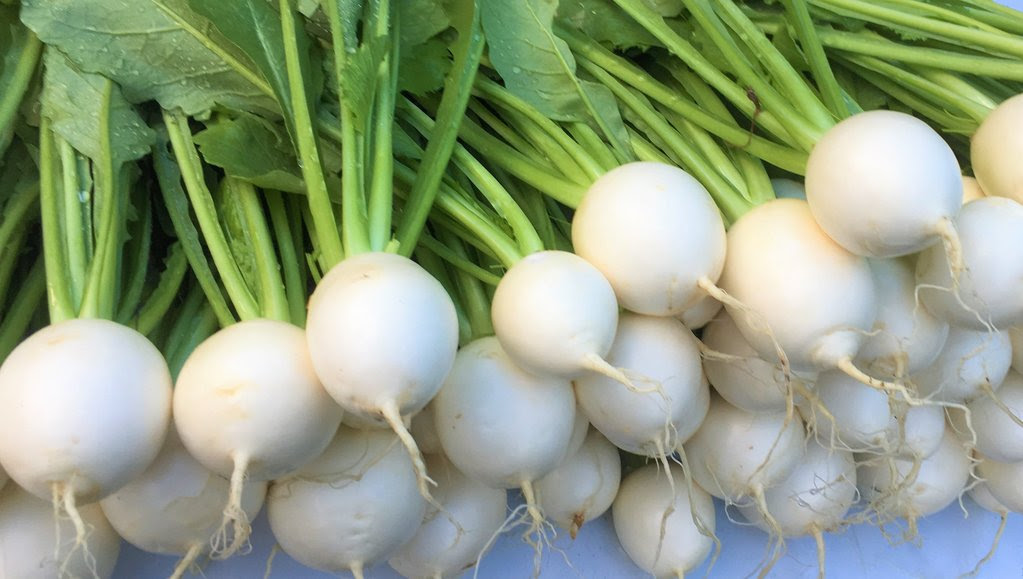
Also known as salad turnips, Hakurei turnips are white, radish looking root vegetables and are members of the Brassica family. They can be zesty, but roast or sauté into a sweet little nugget. We recommend removing the greens as soon as you get home and using the greens in a stir fry or vegetable sauté. The turnip itself is great raw and sliced, diced, or grated in salads, or roasted or sautéed in olive oil, salt, and pepper.
What are Rolled Tibetan Black Barley Flakes?
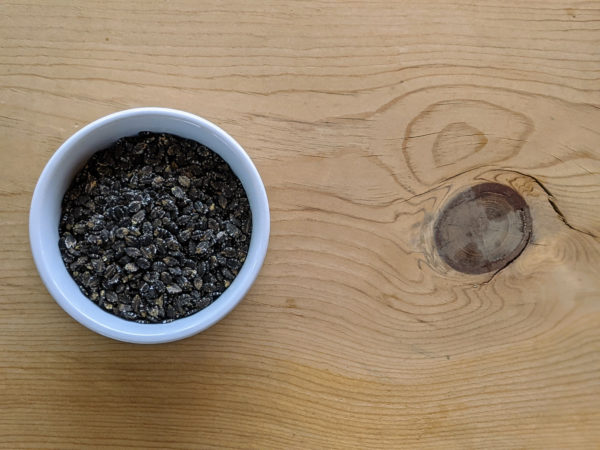
Also known as Tibetan Purple Barley, this rare, heirloom grain heralds from Tibet and is high in fiber and the antioxident anthocyanin. It is sure to add some new flavor and texture to your morning breakfast porridge or granola.
We are now selling this heirloom grain and have just planted our first crop. If you want to try it out, pick a bag up at the Farm Store or the Farmers Market stand on Wednesday. You can also pre-order through the Buy Now button below. 2lb bags are $5.00.
Good golly it felt like we traversed the farm twice eradicating every microscopic and barely germinated weed out there. We can’t wait to see you on Wednesday for Week 2 Pickup as those of us at Market take a well earned break from weeding! (Don’t worry, though, the farmers that say behind will be right back at it on Wednesday afternoon weeding again … and again … and again …)
